Apartment Cologne presents: The Anuga
ANUGA, the General Food and Beverage Exhibition , is a trade fair. It's the largest of its kind globally and it's all about nutritional science. The food industry is also in focus at this fair. You can visit these every second year in Cologne. Ten trade fairs with different food categories are presented. ANUGA is organized by the Kölnmesse.
The concept behind it
The trade fair takes place without public days and is a trading platform for:
- Importers
- Wholesaler
- Decision maker - focus on the food industry
The trade fair is a global trade fair of international importance
It is a merging of supplier and customer:
- Trade and gastronomy
- Take-away market
- Online trade
The global food industry should be presented with a broad spectrum. That is why there are ten trade fairs, all of which operate under one roof. This contributes to the profile sharpness of the individual trade fairs and synergies can be created. These trade fairs are represented below:
- for delicatessen, gourmet and staple foods - Anuga Fine Food
- for drinks - Anuga Drinks
- for the fresh products convenience, fresh delicatessen, fish, fruit and vegetables - Anuga Chilled & Fresh Food
- for meat, sausage, game and poultry - Anuga Meat
- for frozen food and ice cream products - Anuga Frozen Food
- for milk and dairy products - Anuga Dairy
- for bread, baked goods and spreads - Anuga Bread & Bakery
- for organic products - Anuga Organic
- with tea, coffee and cocoa - Anuga Hot Beverages
- in terms of cuisine, technology and equipment for gastronomy and the out-of-home market - Anuga Culinary
.jpg)
.jpg)
.jpg)
.jpg)
.jpg)
.jpg)
.jpg)
.jpg)
.jpg)
.jpg)
.jpg)
.jpg)
.jpg)
.jpg)
.jpg)
.jpg)
Anuga story
The beginnings began in the years 1919 to 1929: In 1919 the first Anuga trade fair took place in the city of Stuttgart. At that time there was a combination for the 12th Association Day of the Reich Association of Delicatessen Agents of Germany. At that time the fair functioned as a miniature model show. Around 200 companies from all over Germany gathered. The fair became a success and a decision was made by the Reich Association. In the future there should be an associated Anuga at every association day. There was a traveling exhibition that was held differently every year. The "General Food and Beverage Exhibition" was brought into being. In 1920 the fair was presented in the city of Munich. The next venues were:
- 1921 Hanover
- 1922 Berlin
- 1923 Magdeburg
For the first time in Cologne
In Cologne, Anuga took place for the first time in 1924 . From August 17 to August 24, 360 exhibitors came to the fair. The companies exhibited their goods in an area measuring around 10,000 m2. Between the First and Second World Wars, this was the best-attended fair. About 40,000 visitors came to this trade fair. Already in this time eight priorities were set:
- Food and luxury goods
- Cooking and baking equipment
- Food production machines
- Packaging materials and packaging machines
- Charging device
- Conveyor technology
- Chemical and cosmetic preparations
- Promotional items
The trade fair was a great success , not least because the professionalism was enormous. But the economic situation was also involved. In 1924 there was a separate economic division for the Rhineland. There was a separation from the rest of the Reich territory. So the Anuga fair developed into a German demonstration against the British occupation. The Festschrift for Anuaga read as follows: "Good German deed".
The years from 1951
In 1951 the trade fair was resumed. There was a decision by the German Food Retail Federation. Today this is the German trade association. For the first time the fair was organized in the city of Cologne in 1951. It took place from October 6th to October 14th inclusive. AUMA viewed Anuga as very important for all of Germany. More than 1200 exhibitors came, who came from all over the world. A total of 34 countries took part in the trade fair. The exhibition area was 52,000 m2 and the Federal Ministry of Food, Agriculture and Forestry contributed special quotas for exhibitors from foreign countries. About two million American dollars were allocated. The number of visitors was around 250,000, who came from near and far.
International guests
Visitors also came from abroad. Since the trade fair was such a success, the decision was made to hold it every two years. This was decided at a general assembly of German food retailers. Adolph C. Nickelsen was the main association president at the time. In 1953, Anuga was very popular with foreign companies. More exhibitors from abroad took part than their own. The number of visitors shot up to around 262,000.
German exhibitors
German exhibitors, however, were able to secure the large halls number one to three for the food and luxury goods sector. The exhibitors for the charging equipment were represented on the upper floor. Systems for technology and machines were exhibited at ground level. The halls from four to five were intended for this. There was a butcher sample shop and a milk shop sample shop. The "Glass Kitchen" aroused curiosity and was one of the main attractions. This was about the fishing industry in Germany. The press praised this as a "masterpiece of exhibition buildings in West Germany".
Abroad
Foreign countries presented themselves in hall seven . Ludwig Erhard was the Federal Minister of Economics at the time. He wanted Anuga to stay in Cologne. In 1955 the exhibition area grew to 20,000 m2. The show "Germany offers" was received very benevolently at the time. Since the ANUGA developed so well, the main association of the food retail trade decided that the trade fair should take place every second year in the city of Cologne. Konrad Adenauer was the most prominent visitor to the successful fair. He was extremely impressed by the show and informed the organizers that they could rightly be proud of the fair. The IKOFA took place in southern Germany and was in competition with Anuga. In 1957, however, Anuga recorded more visitors. The "Packing and Packaging" show took 140 exhibitors under its wing and was able to shine with maximum numbers.
Shop fitting day
The shopfitting day saw around 150 exhibitors and the show was called "The modern shop" . Seven ships were made available to function as hotels. 1000 visitors to the fair stayed in a hotel ship. In 1959 there was a supplement to these two shows. The show "Advertising and Decoration" was added. The Butchers' Association of Germany took part in Anuga for the first time. The FNL, a support group of the reform economy, organized an information show and it came to the construction of the hall No. 14. There visitors saw in the show "Frozen chain" the subgroup "Frozen and Frozen Food". Various specialty frozen vehicles were presented on the open-air site.
On course for expansion
Anuga expanded in 1961. The confectionery industry has been exhibiting since 1957. Your show was entitled "The Sweet Road". This was increased to more than 250 exhibitors and was among the largest groups in the industry. Visitors were able to familiarize themselves with modern office organization at the show "The modern retail sector". There were a total of four visitor days and in 1963 another focus was added in the dairy industry. The show "Selling groceries in a modern way - securing livelihoods for tomorrow" was on the program in 1965.
Packaging and Co
A visitor magnet was also the category "Active shop design: light, color, material" . "10 years of packaging at Anuga" was a trade fair for the packaging industry. There was a first joint stand for the German vending machine industry. From now on there were also five days for buyers with a specialist character. In 1996 the 50th birthday of Anuga was celebrated. The former model show of 1919 mutated into a world fair for these industries. Non-food had the first presentation and around 50 exhibitors came. Halls 1 to 3 were expanded. The confectionery industry was able to use Halls 1 and 2 on the upper floor. From now on, the trade fair only took place on seven days.
Fast Food
In 1967 the exhibition "Out-of-home catering" was added. The fast food industry now also wanted to introduce itself at Anuga. This did not lead to any enlargement of the site, but the "Eurosnack" was created. It initially took place at Anuga, but later became an independent trade fair. The international confectionery fair takes place once a year in Cologne. From 1971 DEHOGA was part of Anuga, a state trade show for the hotel and restaurant industry. Now there were also large kitchens to be admired at the fair. The CMA, a central marketing company for the German agricultural sector, was also integrated.
Canteen and Co
Since 1971, Anuga has been called in the official context: "General food and luxury food exhibition with Inter-Non-Food, technical center for the food industry and specialist exhibition for gastronomy." The show "Community catering and out-of-home." -Verzehrs "with a sample canteen" was a special show. "The exemplary hotel room" was also the focus. There was a "Gastronomy Day" in the information center and the trade fair was shortened to six days with a public day.
A reorganization from 1975
In 1975 there was a basic discussion about the pure trade fair. There were three main areas as well as state shows:
- Consuma is a "Food-Nonfood" department
- the Systema is a technical department for catering systems
- the Technica is a technical area of the food trade as well as -
- the state shows: Companies from abroad can present themselves here. From the beginning, they took part in Anuga with great success. There was EC support for developing countries. The Federal Ministry and GTZ also offered support. Third World exhibitors received stand prices at fair, lower prices.
In 1975 the "Small Commission" was convened. There was a concept discussion on how to proceed. On July 3, 1974, a protocol was drawn up in which it was stated that the successful top position as a specialist event for the food industry should be expanded. The consumption areas should be expanded and their specialist character reinforced.
A closed representation was planned for:
- Drinks
- Delicatessen
- Meat products
- Imports
Further areas
Frozen foods, sweets and dairy products were separate sectors. For the out-of-home catering, the aim was to incorporate the areas of grill, snack and community catering. The last remaining public day was canceled. Anuga has therefore committed itself to being an exclusive trade fair. Since then, only more visitors have been admitted to the trade. A different graphic symbol was developed for each subject area. Each specialist group also had its own advertising material. An "a" was designed as the logo for Anuga. This spreads around the whole globe. The connection between the individual areas should be expressed in this way.
Even more space
In 1977 the exhibition center was expanded. The butcher's guild of North Rhine-Westphalia was added. Halls 1 to 5 have been assigned to the state shows. Hall 6 was kept free for imports. Hall 1 to Hall 5 were intended for the state shows. Other halls:
- Hall 8: Non-Food
- Hall 10.2: Frozen food
- Hall 12.2: "Sweet Center" and "Milky Way"
- Hall 13: Beverage market
- Hall 14: Systema
- Hall 15: Technology
Spin-off
The exhibition of the restaurant association of the state of North Rhine-Westphalia separated itself from the Anuga trade fair. Instead, it exhibited in the city of Düsseldorf and presented itself at the guest fair. In 1983 the wood and plastic processing craft exhibited for the first time. In addition, the "European Association of Associations of Health Food Manufacturers" was added. The "Gastrovision" received a lot of praise in a special show. The non-food has not been presented since 1985. This intensified the specialist character of Anuga again.
There was a direct sale of all goods and samples . In 1987 the three-day ticket was introduced. This was to prevent unauthorized visitors to the trade fair from getting season tickets. In 1991 the "Milky Way" was relocated to a larger exhibition hall. There was space for 422 exhibitors from a total of 25 countries. This was a reaction to the Nowea trade fair in Düsseldorf. In 1990 this was organized for the first time as "Intermopro". It is a special fair that presents milk and dairy products.
New systematisation was added between 1993 and 1995
In 1993 the size of the fair had reached a considerable level . It was therefore necessary to present special offers. The areas Gastroma, Consuma and Technica were added. The drinks area has been reorganized and the "hotel equipment" area has been removed. From then on, entry vouchers were no longer issued. The areas have become more transparent thanks to the new aisle layout. Dieter Ebert, the general manager of the trade fair, announced: "Nestle does not benefit when a Ms. Schmitz from Nippes with the coffee wreath appears at the fair!
A Parma ham exporter does not benefit from a Mr. Schmitz showing up with his bowling club! "Then the number of visitors fell to 40,000, but the quality of the trade fair visitors increased. In 1995 the technology department was outsourced "Anuga FoodTec" was launched. Anuga became "Anuga Cologne - World Food Market" and the subtitle was removed. The exhibition area was therefore larger and the range was refined. The divisions were added:
- Meat, sausage, game and poultry division
- the dairy and dairy products division
- the frozen food and ice cream products division
- a division for beverages with five areas
- the "General Foods and Basic Materials" section
- a division for spices as well as delicatessen and health food and canned food
- the luxury food division as well as bread, baked goods and spreads
- a fruit section and fresh fruit and fresh vegetables
- the division for shellfish, fish and crustaceans
International exhibitors
In 2001 there were 165,000 suppliers who came from 147 countries. There were presentations from 6205 companies in 95 countries. The proportion of foreigners was 75% and 195 companies came from America. The focus was on the segments: frozen food, meat and poultry, milk and dairy products. With the "Anuga special" a separate area was presented. There were specialties from the region here.
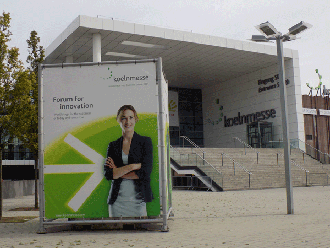
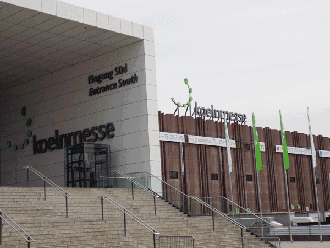
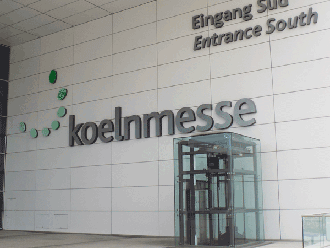
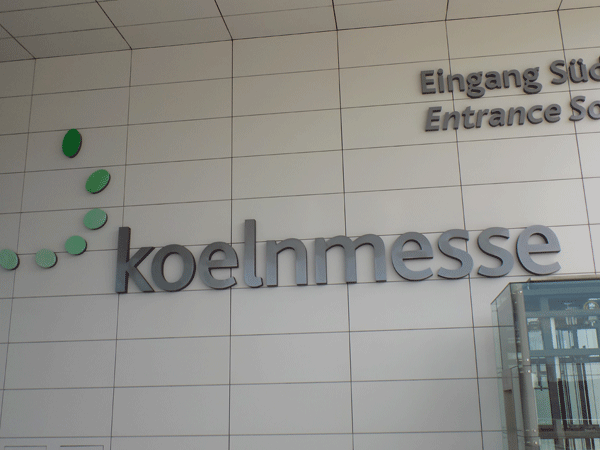
Ten trade fairs are under one roof
In 2003 the show "10 trade fairs under one roof" took place for the first time. There was an increase in exhibitors of five percent in 2005. Anuga recorded a total of 6607 exhibitors who came from 95 countries. 83 percent came from outside Germany and around 163,000 trade visitors were counted. These came from a total of 175 different countries. In 2009 there were approximately 153,500 visitors to the fair. They came from more than 180 countries, with 61 percent being foreign guests. There were 6522 providers from 97 different countries. There were the following trending topics:
- Convenience products
- Wellfood products
- "Free-From" products
Corporate Social Responsibility
The topics "Corporate Social Responsibility" and "Sustainability" were also represented. In 2011 there were 6,743 suppliers who came from 97 countries. The number of visitors was 154,516 and the trade fair lasted from October 8th to 12th inclusive. "Chef of the Year" was a competition that was held at that time. The competition takes place every two years. Preliminary decisions are made about finalists and the event takes place in German-speaking countries in ever-changing cities.
Some numbers
In 2013 the 32nd Anuga took place and 6627 suppliers came. These had a fairground area of 152,000 m2 . There were five days of the fair and 154,642 trade fair visitors were counted. 101,809 of these were from abroad. The 33rd Anuga took place in 2015 and further records were set. 7063 suppliers came from 108 different countries. The foreign share was 89% and the exhibition space was 284,000 m2. 160,000 visitors were recorded and they came from 192 different countries. In 2017 there was the 34th Anuga with 7,400 exhibitors. They presented themselves from 107 different countries. The number of visitors broke all records, with 165,000 trade fair visitors.
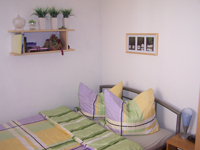
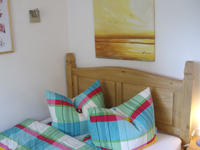
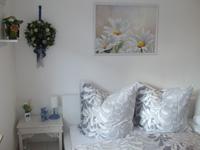
Living very close to the trade fair!
You want to walk to the Koelnmesse? Then book a trade fair apartment at Apartment Cologne , then you can easily walk to the trade fair! We look forward to your inquiry!
